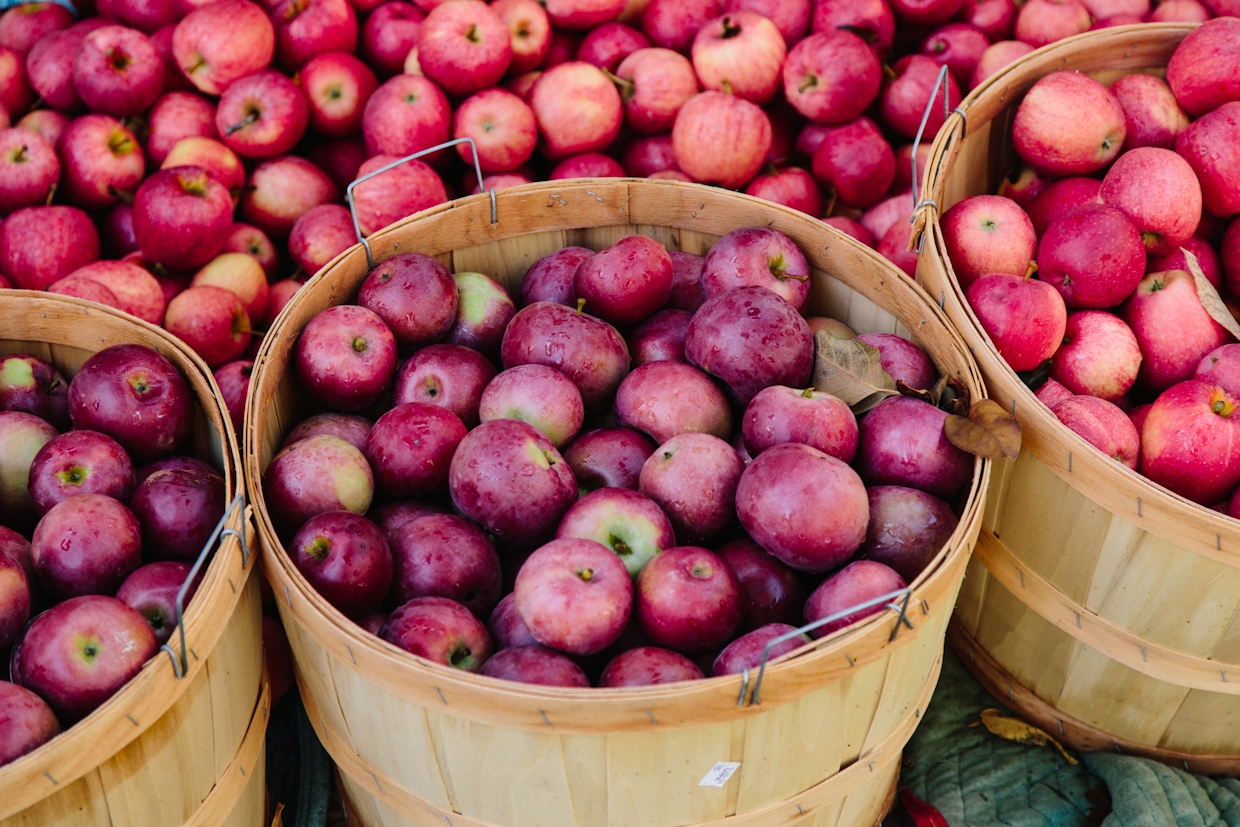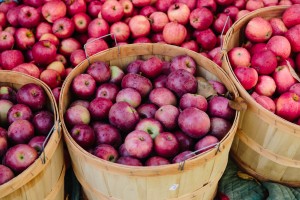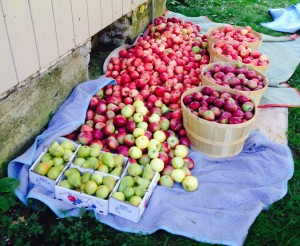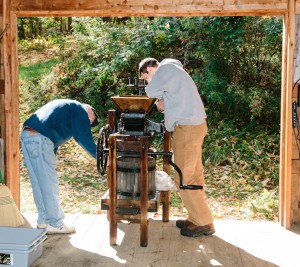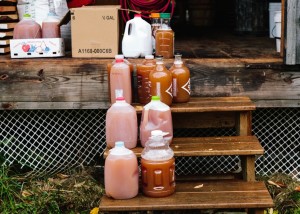New York State is second in apple production in the United States, after Washington State, and a close third is the state of Michigan. One of the major apple growing areas in New York State is in western NY along the shore of lake Ontario between Buffalo and Rochester. The apples are harvested in the fall mainly between the end of September and the and of October. It is the perfect time of year to turn apple cider making into a great family activity. If you have access to a press and some apples you are ready to go!!
One of the challenges of making great tasting apple cider is to combine a specific blend of apples into the finished cider. Basically we combine three types of apples sweet, tart (acidic) and Bitter (tannic)(also acidic); for sweet apples we use Gala; for tart apples we use McIntosh, and for bitter apples we use Cortland. My uncle Art Williams used to add ripe bartlett pears to the mix for added sweetness and we add them too, if we can find them. We mix the three apple varieties together as equally as we can (1/3, 1/3, 1/3), prior to when we crush and press the apples to make sure the same blend is made for each gallon of cider.
It is important to maintain the mechanics of the press before and after operation. Be sure to oil or grease, gears, shafts and locking screws to make sure the mechanical parts are in working order. Our cider press is an old hand crank machine. Inspect your press to determine if it anything needs tightening or replacing. You will not want to make repairs to the press while you are making cider. If you have a more modern machine, you should consult the owners manual.
Sanitation is the most important part of preparing the press to make the cider. When we put the press in storage after use, we box up, in sealed containers, all the parts we can. Then we cover the basic press with plastic. When preparing the press, we wash it completely with detergent and water; scrubbing all the surfaces. Then we sanitize all the surfaces with a combination of bleach and water. We wash the apples prior to pressing by rinsing them off with a generous supply of water from a garden hose. Then we are ready to begin pressing the apples.
The prepared mixture of apples and pears are added to the hopper. The crank is turned and the apples are crushed into a pulp ready for pressing. We line the pulp tubs with a clean sheet to separate the pressed juice form the pulp as it is pressed. The pressing is done with a heavy screw pushing down on the pulp in the tub with a heavy block of wood. When the juice comes through the slats in the tub it drains to the bottom tray and comes out a hole at the end of the tray. We collect the juice with a clean plastic container. The container is then poured through a funnel into our waiting clean plastic jugs. The sweet apple cider should then be refrigerated as soon as possible and consumed within a week.
This is a great activity for family or friends!! It is an opportunity for all to work together, getting the apples, preparing the press, throwing the apples in the hopper, using a little muscle to press the pulp, dumping the dry pulp, cleaning up, drinking the cider. And of course there is always some kind of meal or barbecue involved!!

